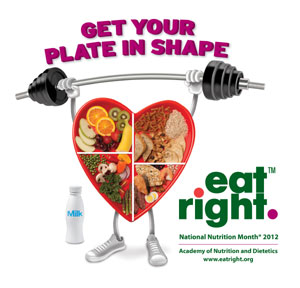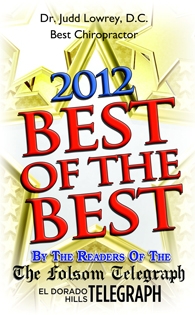Get Your Plate in Shape
Friday, March 16th, 2012March is National Nutrition Month! Learn how to Get Your Plate in Shape with these healthy tips from Academy of Nutrition.
Eating a healthy diet doesn’t have to be difficult. Making a few simple changes to your daily eating plans can benefit you for a lifetime. Here are a few ways to “Get Your Plate in Shape”.
- Make half of your plate fruits and vegetables: Eat a variety of vegetables, especially dark-green, red and orange varieties. Add fresh, dried, frozen or canned fruits to meals and snacks.
- Make at least half your grains whole: Choose 100 percent whole-grain breads, cereals, crackers, pasta and brown rice. Check the ingredients list on food packages to find whole-grain foods.
- Switch to fat-free or low-fat milk: Fat-free and low-fat milk have the same amount of calcium and other essential nutrients as whole milk, but less fat and calories. For those who are lactose intolerant, try lactose-free milk or a calcium-fortified soy beverage.
- Vary your protein choices: Eat a variety of foods from the protein food group each week, such as seafood, nuts and beans, as well as lean meat, poultry and eggs. Keep meat and poultry portions small and lean. And be sure to choose seafood as the protein at least twice a week.
- Cut back on sodium and empty calories from solid fats and added sugars: Compare sodium in foods and choose those with lower numbers, and season your foods with herbs and spices instead of salt. Switch from solid fats to healthy oils like olive and canola oil. Replace sugary drinks with water and choose fruit for dessert.
- Enjoy your foods but eat less: Avoid oversized portions. Use a smaller plate, bowl and glass. Cook more often at home where you are in control of what’s in your food. When eating out, choose lower calorie menu options.
- Be physically active your way: Adults need at least 2 hours and 30 minutes of physical activity every week. Choose activities that you enjoy, and start by doing as much as you can.
What are you doing to get your plate in shape?











